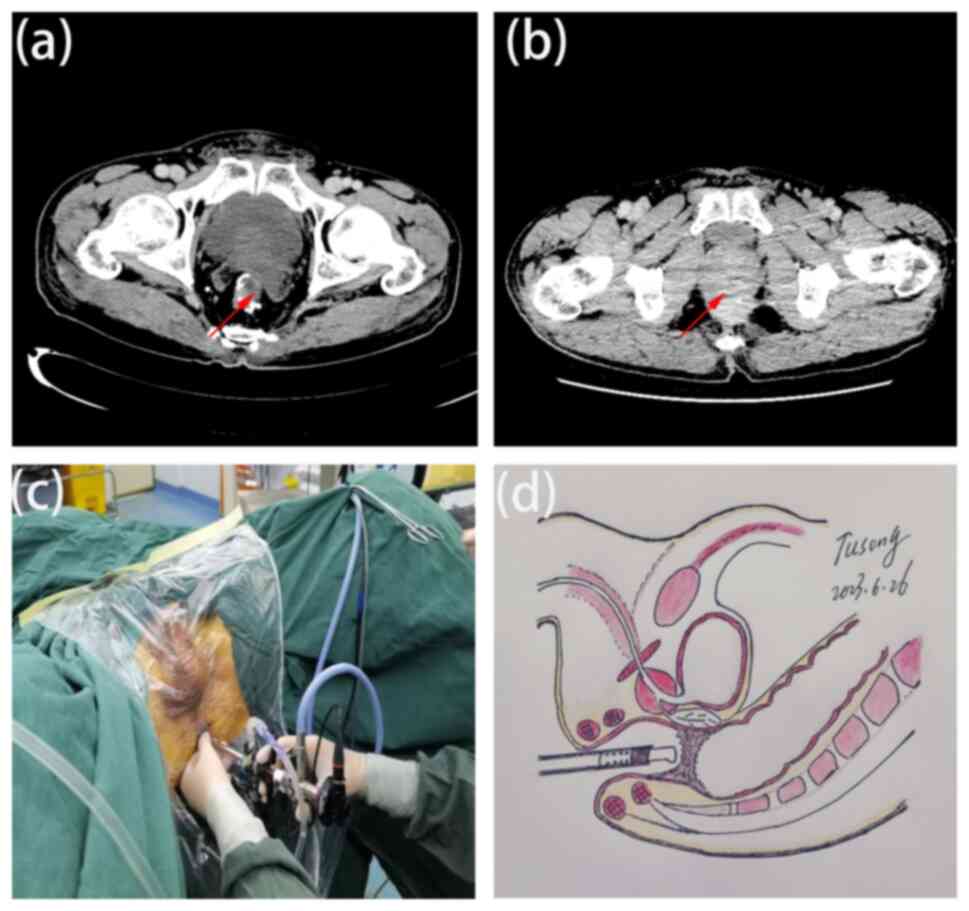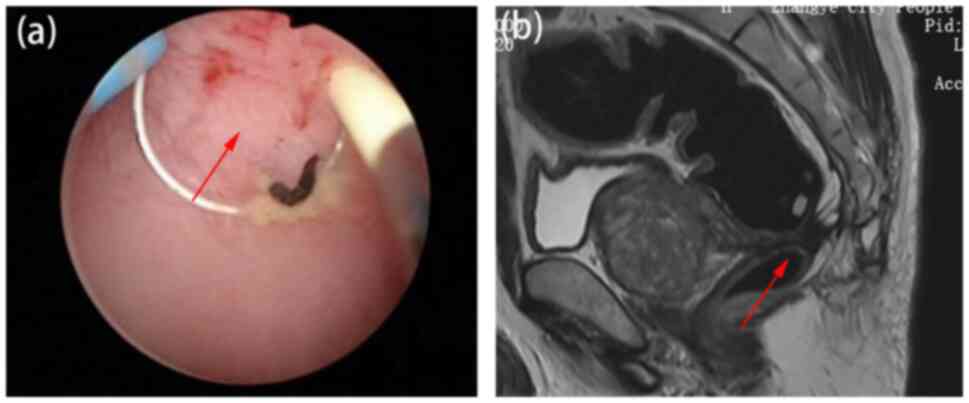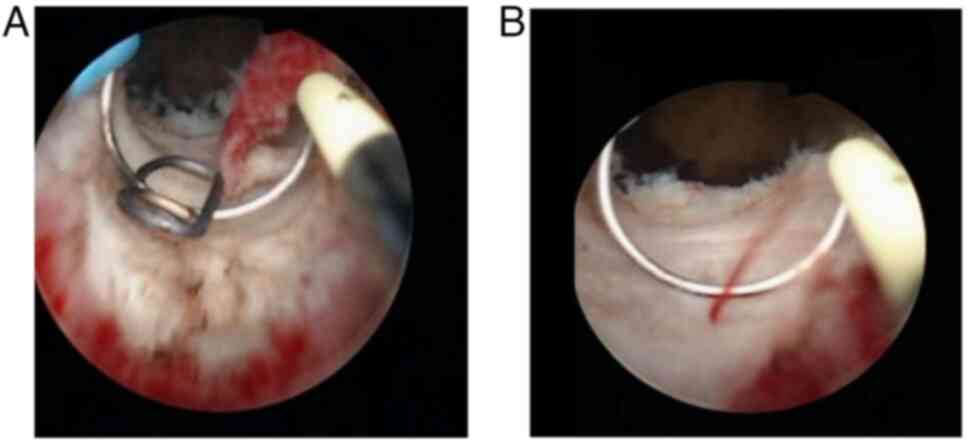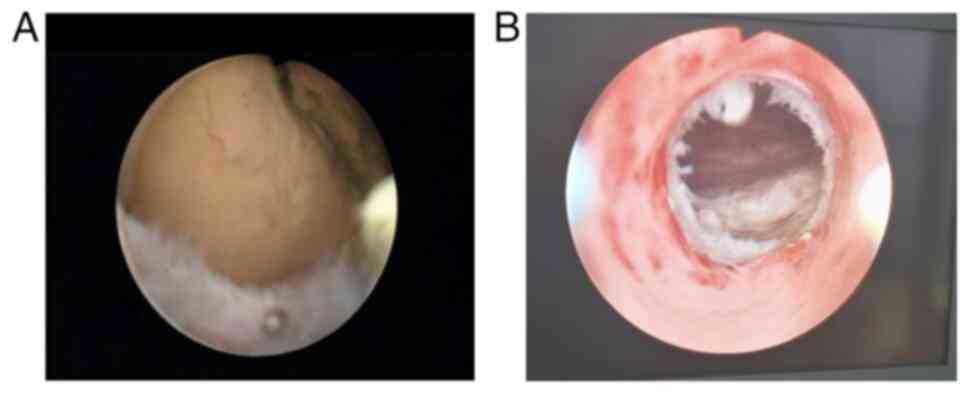|
1
|
Wilkinson N: Management of rectal cancer.
Surg Clin North Am. 100:615–628. 2020.PubMed/NCBI View Article : Google Scholar
|
|
2
|
Mathew R: Radical surgery versus organ
preservation for early-stage rectal cancer. Lancet Gastroenterol
Hepatol. 6(263)2021.PubMed/NCBI View Article : Google Scholar
|
|
3
|
Planellas P, Farrés R, Cornejo L,
Rodríguez-Hermosa JI, Pigem A, Timoteo A, Ortega N and
Codina-Cazador A: Randomized clinical trial comparing side to end
vs end to end techniques for colorectal anastomosis. Int J Surg.
83:220–229. 2020.PubMed/NCBI View Article : Google Scholar
|
|
4
|
Zheng XC, Su JB and Zheng JJ: Risk
assessment of rectal anastomotic leakage (RAREAL) after DIXON in
non-emergency patients with rectal cancer. BMC Gastroenterol.
23(343)2023.PubMed/NCBI View Article : Google Scholar
|
|
5
|
Hu X, Guo P, Zhang N, Guo G, Li B, Liu Y,
Niu J and Wang G: Nomogram for benign anastomotic stricture after
surgery for rectal cancer. Asian J Surg. 46:111–119.
2023.PubMed/NCBI View Article : Google Scholar
|
|
6
|
Forshaw MJ, Maphosa G, Sankararajah D,
Parker MC and Stewart M: Endoscopic alternatives in managing
anastomotic strictures of the colon and rectum. Tech Coloproctol.
10:21–27. 2006.PubMed/NCBI View Article : Google Scholar
|
|
7
|
Lu G, Li J, Ren M, Ma F, Sun X, Lv Y and
He S: Endoscopy-assisted magnetic compression anastomosis for
rectal anastomotic atresia. Endoscopy. 53:E437–E439.
2021.PubMed/NCBI View Article : Google Scholar
|
|
8
|
Kurashima M, Joshi S, Sobrino J and
Blewett C: Rectal atresia treated via a transanal and posterior
sagittal approach: A report of two cases. Cureus.
15(e38694)2023.PubMed/NCBI View Article : Google Scholar
|
|
9
|
Kraenzler A, Maggiori L, Pittet O, Alyami
MS, la Denise JPA and Panis Y: Anastomotic stenosis after coloanal,
colorectal and ileoanal anastomosis: What is the best management?
Colorectal Dis. 19:O90–O96. 2017.PubMed/NCBI View Article : Google Scholar
|
|
10
|
Zhang Z, Hu Z, Qin Y, Qian J, Tu S and Yao
J: Application of transurethral prostate resection instrumentation
for treating low rectal anastomotic leakage: A pilot study. Cancer
Manag Res. 14:1987–1994. 2022.PubMed/NCBI View Article : Google Scholar
|
|
11
|
Lamazza A, Fiori E, Schillaci A, Sterpetti
AV and Lezoche E: Treatment of anastomotic stenosis and leakage
after colorectal resection for cancer with self-expandable metal
stents. Am J Surg. 208:465–469. 2014.PubMed/NCBI View Article : Google Scholar
|
|
12
|
Guyton KL, Hyman NH and Alverdy JC:
Prevention of perioperative anastomotic healing complications:
Anastomotic stricture and anastomotic leak. Adv Surg. 50:129–141.
2016.PubMed/NCBI View Article : Google Scholar
|
|
13
|
Schlegel RD, Dehni N, Parc R, Caplin S and
Tiret E: Results of reoperations in colorectal anastomotic
strictures. Dis Colon Rectum. 44:1464–1468. 2001.PubMed/NCBI View Article : Google Scholar
|
|
14
|
Zhang B, Zhuo GZ, Tian L, Zhao K, Zhao Y,
Zhao YJ, Zhu J, Zhang T and Ding JH: Risk factors of coloanal
anastomotic stricture after laparoscopic intersphincteric resection
for low rectal cancer. Zhonghua Wei Chang Wai Ke Za Zhi.
22:755–761. 2019.PubMed/NCBI View Article : Google Scholar : (In Chinese).
|
|
15
|
Sali PA, Pilania V, Sutar S, Krishna K,
Ghetla S and Shetty T: Total colectomy in a gangrenous large bowel
due to a rare double closed loop obstruction. Int J Surg Case Rep.
17:1–4. 2015.PubMed/NCBI View Article : Google Scholar
|
|
16
|
Inoue T, Shichijo S, Yasui M, Takeuchi Y,
Michida T and Ishihara R: Endoscopic incision and balloon dilation
using the rendezvous technique for complete anastomotic obstruction
after rectal low-anterior resection. Endoscopy. 54:E90–E91.
2022.PubMed/NCBI View Article : Google Scholar
|
|
17
|
Wang S, Wan J, Li Z, Long C, Zhang R, Luo
Y, Han Z and Yan J: Comparison of the efficacy of endoscopic radial
incision and cutting procedure and endoscopic balloon dilatation
for benign anastomotic stricture after low anterior resection
combined with preventive loop ileostomy in rectal cancer. Dis Colon
Rectum. 20:1392–1401. 2023.PubMed/NCBI View Article : Google Scholar
|
|
18
|
Zhou W, Xia L, Wang Z, Cao G, Chen L, Chen
E, Zhang W and Song Z: Transanal minimally invasive surgery for
rectal anastomotic stenosis after colorectal cancer surgery. Dis
Colon Rectum. 65:1062–1068. 2022.PubMed/NCBI View Article : Google Scholar
|
|
19
|
Yan P, Qin Y, Zhang Z, Xu W, Qian J, Tu S
and Yao J: Application of prostate resection endoscopy for treating
acute obstruction associated with rectal cancer. J Cancer.
13:1679–1684. 2022.PubMed/NCBI View Article : Google Scholar
|
|
20
|
Barba M, Fastenmeier K and Hartung R:
Electrocautery: Principles and practice. J Endourol. 17:541–555.
2003.PubMed/NCBI View Article : Google Scholar
|
|
21
|
Zeng XT, Jin YH, Liu TZ, Chen FM, Ding DG,
Fu M, Gu XQ, Han BM, Huang X, Hou Z, et al: Clinical practice
guideline for transurethral plasmakinetic resection of prostate for
benign prostatic hyperplasia (2021 Edition). Mil Med Res.
9(14)2022.PubMed/NCBI View Article : Google Scholar
|


















